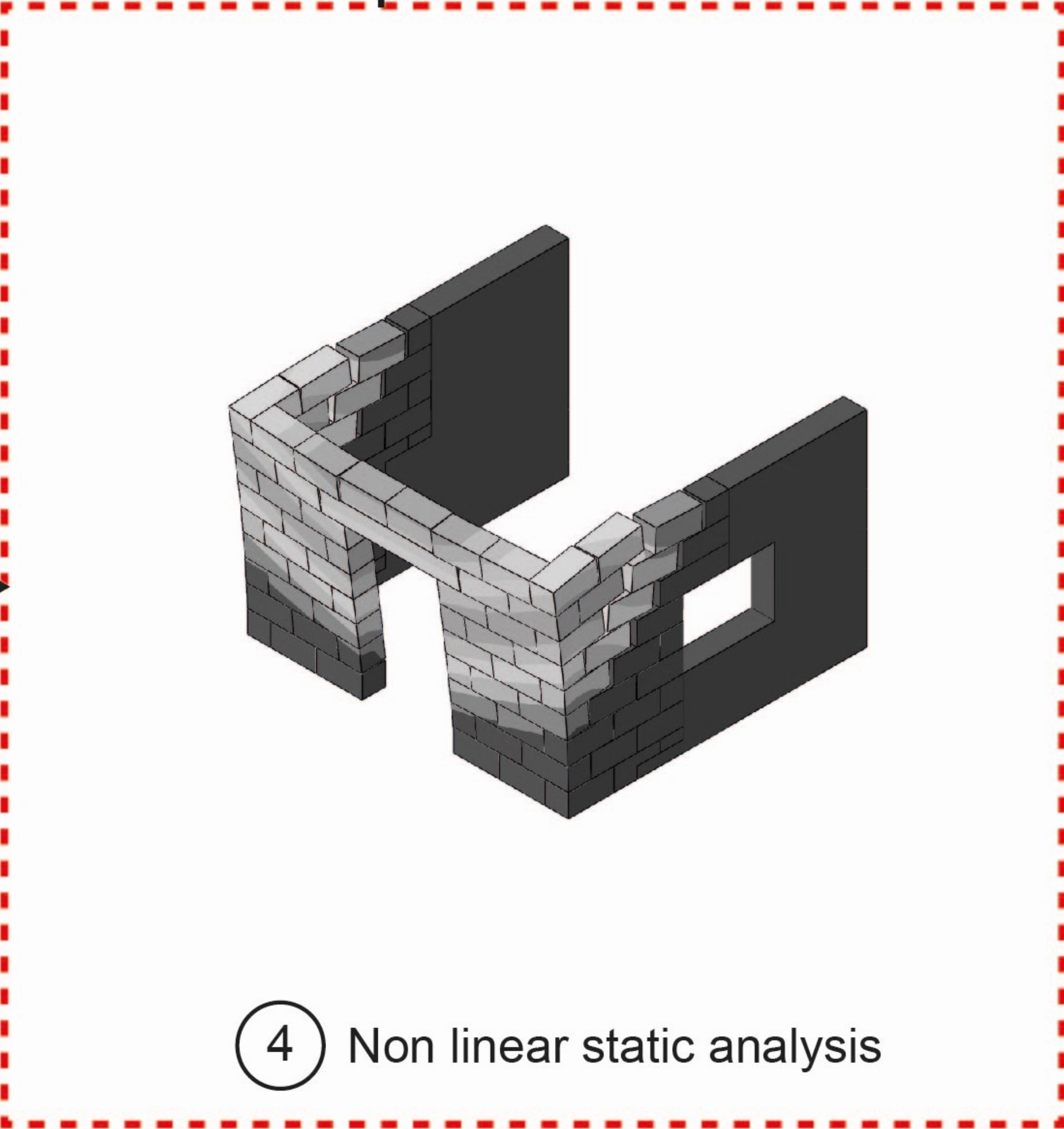In the field of masonry, many researchers use numerical approaches to model the behaviour of the whole structure. Classically, there are three different approaches which can be described as:
- Micro-modelling approaches, where both units and mortar are modelled through finite element models, while interfaces between units and mortar are represented through contact interfaces.
- Simplified micro-modelling approaches, where only the units are modelled through finite elements. The mortar is modelled through zero-thickness contact interfaces between masonry units.
- Macro-modelling approaches, where the masonry material is replaced by an equivalent homogeneous material representing both units and mortar.
These approaches are described according to an increasing level of simplification and a decreasing amount of required computational time. Indeed, though macro-modelling approaches are very time-efficient, sometimes they can not accurately represent the actual collapse mechanisms. Therefore, M. F. Funari, L. C. Silva, N. Savalle and P. B. Lourenço recently proposed a concurrent modelling strategy that combines the advantages of both methods. The most vulnerable part of a masonry structure is modelled through a simplified micro-modelling strategy to reach a good accuracy in the behaviour of the structure. On the other hand, the rest uses a macro-modelling approach with an equivalent homogeneous material to reduce computational time. A preliminary step using limit analysis principles gives the information about the most vulnerable part. In particular, they found that using such an approach considerably reduces (-60%) the required amount of time compared to a fully micro-modelling strategy.

Discover more at the following link.
Share this post
